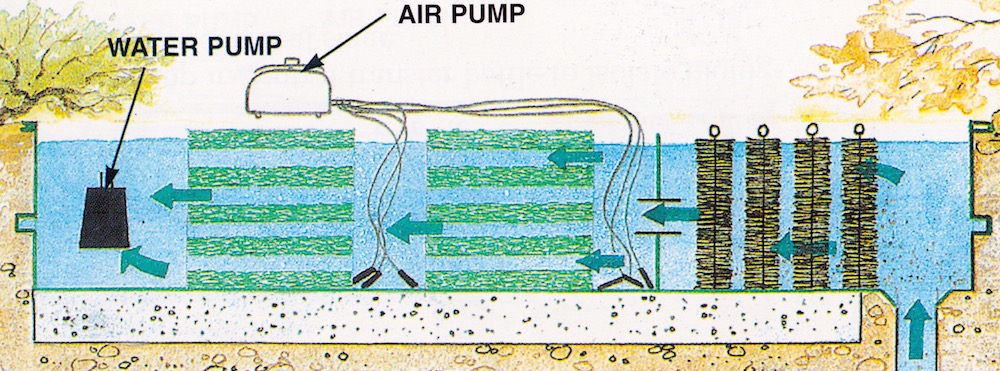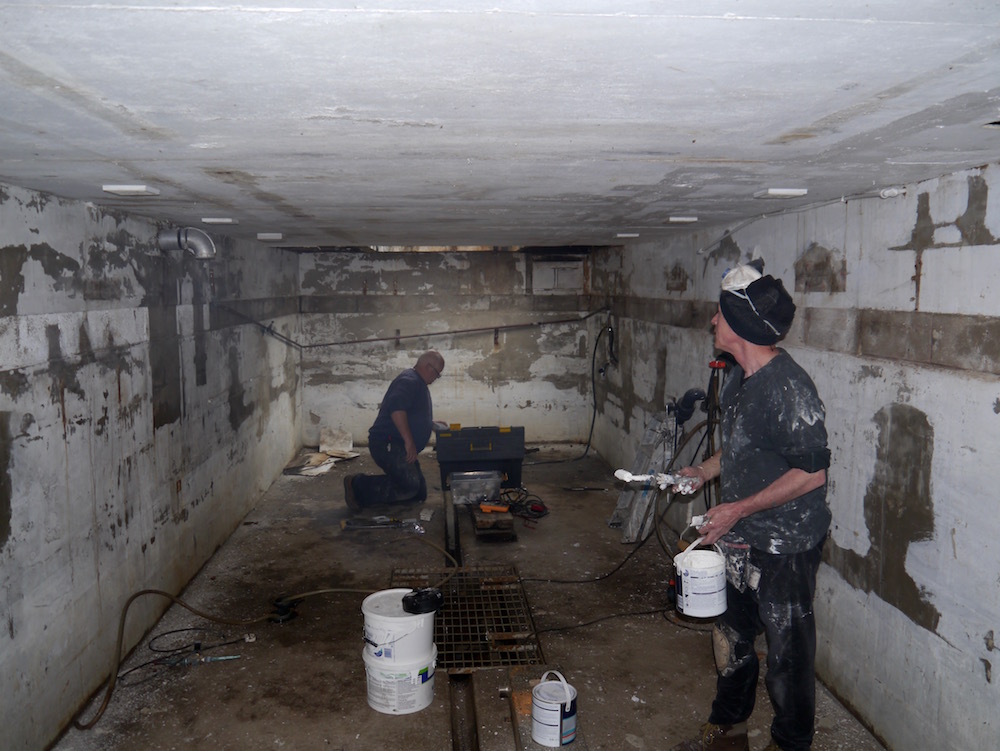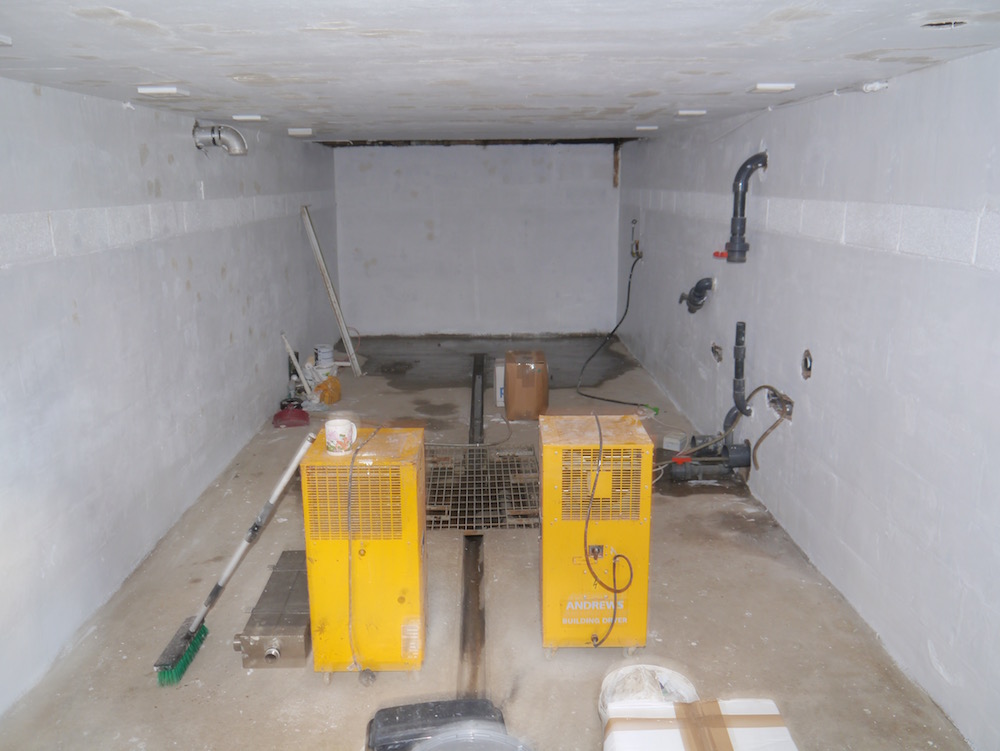This next bit is all to do with the pond and I’m relieved I decided to sleep on it, instead of getting a company to fill it all in.
So I battled with myself for some time and then jotted down exactly what I’d need for total perfection in this empty Koi pond and this empty filter house.
This is what I came up with on my list: –
I needed to reduce current running costs by around 90%.
I needed to find a filter that could be maintained ‘thoroughly and in seconds’ by folks from 9 years old to those 80 years old and over.
I needed to find a filter system that did not lose too much water when completely discharged and the pump could be re-started immediately – but I could check with my own eyes, that after the discharge, the filter would just be as good as new.
I desperately needed to find a way of preventing any new outbreaks of Hikui & Shimi.
It was indeed a daunting list of needs and it did take me many hours of arguing with myself before I eventually came up with the plan.
The first thing I decided to tackle was the ‘Hikui thing’, on my Koi travels all around the world I had seen Hikui rearing it’s head in hundreds of ponds – and on just about every Koi bloodline imaginable.
If it WAS down to genetics than every single Koi with non-metallic red pigmentation would succumb to this problem and yet I’d never witnessed any of this at any of the Koi breeders I had visited over many years.
(Save one, and I did understand later why this was an isolated instance).
So what was so special about the indoor facilities of the Japanese Koi breeders and why did the top Japanese collectors insist on keeping their very best Koi with these breeders?
What was so different between the breeder’s ponds and the enthusiast’s ponds?
Well for starters, the breeders only kept their Koi in their indoor pond for nine months of the year, for the other three months of the year their Koi were placed outdoors in mud ponds.
Enthusiasts kept their Koi in their own ponds continually – usually for many years at a time.
Once the breeders moved all their Koi stocks into the mud ponds, their indoor systems were emptied of water and all filtration media – after which, everything was disinfected and steam-cleaned. Then everything was left to dry for three months before re-filling.
This did not apply to ponds owned by enthusiasts.
There was no doubt (in my own mind) I had stumbled onto something of great importance here and I believed that cleanliness played a key role here.
In truth, the Japanese breeders only knew how to keep their Koi in the indoor systems for 9 months of the year and three months later, they started up again with brand new ponds.
To try and do the same thing with enthusiast’s ponds would mean closing down the system, placing Koi in temporary containers and then taking several days to empty the pond, remove the media, steam clean and disinfect all surfaces and eventually re-fill the system before returning the Koi – in short, not practical.
With all this in mind I needed to find a filter system where both mechanical and biological stages could be thoroughly cleaned in seconds AND, if necessary, could be cleaned every single day AND started up immediately after a total clean out.
Deep boxes were out of the question, as were upward-flow boxes’ I needed something that held the minimum of water, so when a clean out was made, it would not drop the pond level significantly.
I then recalled a filter I had designed back in 1986 named ‘The Budget Filter’ – simply because it was the cheapest one in my range.
I also highlighted this system in ‘Koi Kichi’.

It was the only filter to adopt the horizontal-flow water pattern, a single chamber box that used filter brushes for the mechanical stage and aerated cartridge blocks made from Japanese filter mat for the biological stage.
I can’t recall exactly how many of these I had sold over the years but I do know I had never had a single complaint about them from the owners.
Furthermore, it was the only filter design of mine that was never copied by other manufacturers.
Next I looked up some of my old customers who had bought these filters from me and asked if I could pay them a visit.
This took place in late 2008, the first person I visited purchased his ‘Budget Filter’ back in 1987 – 21 years earlier – and it was still working on his pond without a single complaint. The next visit to another customer produced the same results – no complaints again.
I decided there and then to modernise my ‘Budget Filter’ and bring it up to date.
I’ll return to the filter itself later and return to the pond that had been collecting rainwater for some months.
It was a ‘consortium’ of Ian Miles, a guy who takes care of my pond installations and my wife Hilary who had been plotting together with a view of not getting the pond removed – but instead getting it back up and running.
Promises came forth such as – ‘Only belt and braces’ and ‘It won’t cost much to do’ followed by the killer from Ian who mentioned – ‘It will be the perfect pond to demonstrate your filters Peter’.
That remark clinched it!
But Oh how I wished I hadn’t destroyed the filter house some months earlier.
Ian and Hilary (now a changed woman) said they would carry out the necessary work. The first thing to do was to get the wreck of an underground bunker back to being a filter house – not so easy – but do-able – that’s if one does not mind getting one’s hands dirty!




No decisions had been made as to what would go inside the filter house when completed. All this will be explained later.
Waddy 19/01/16.
